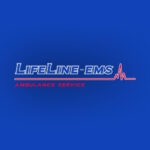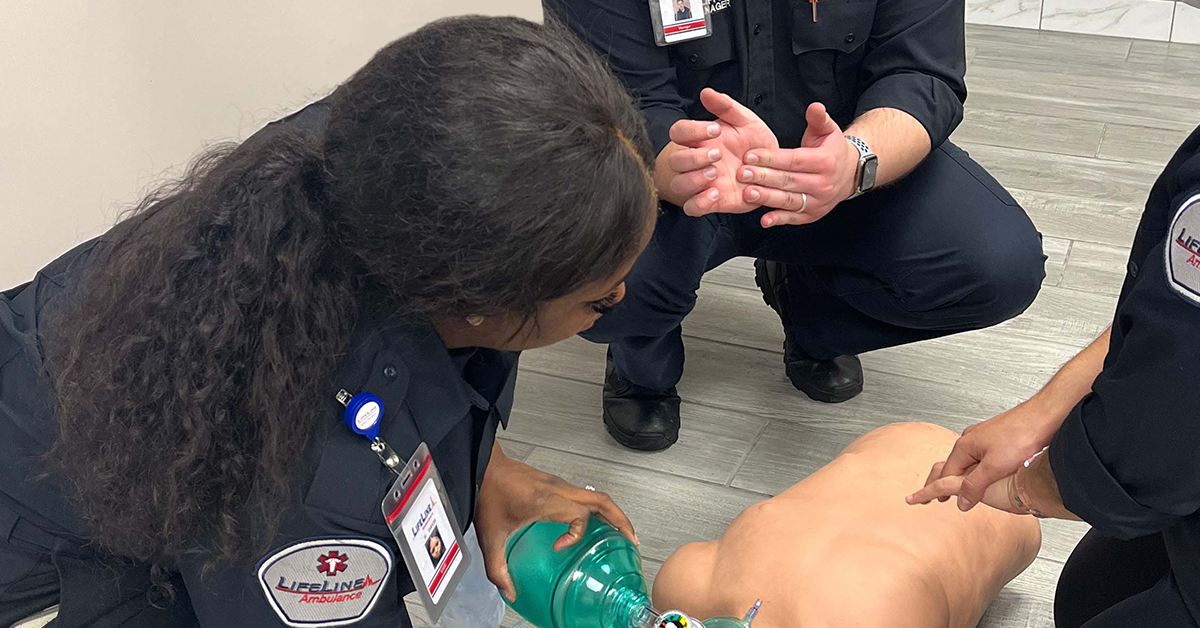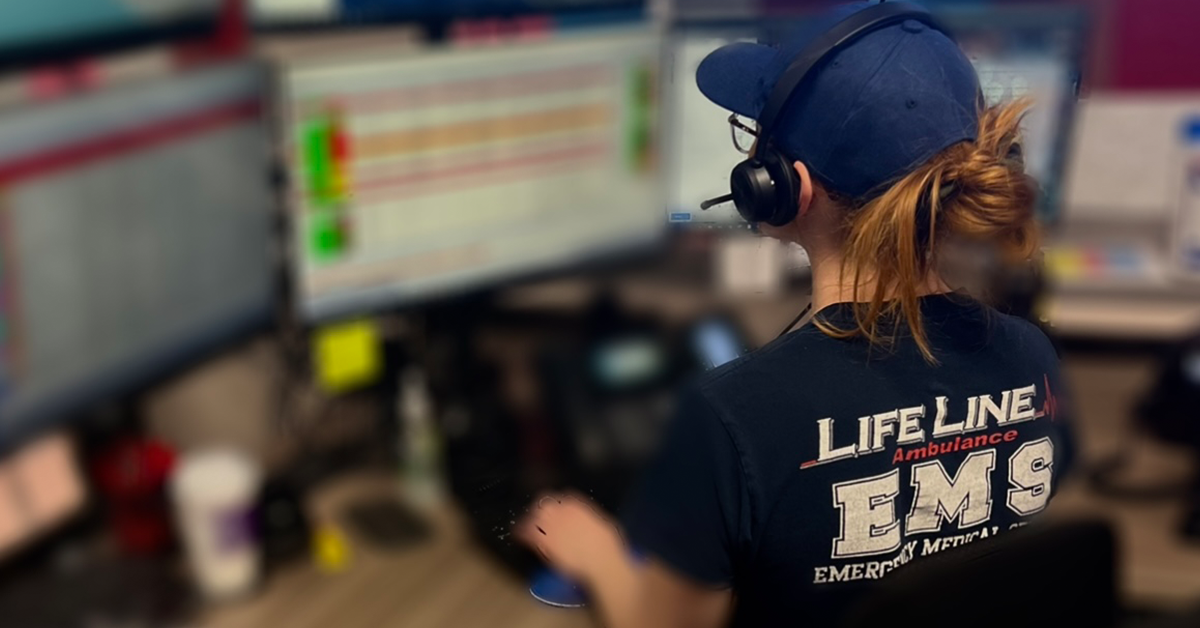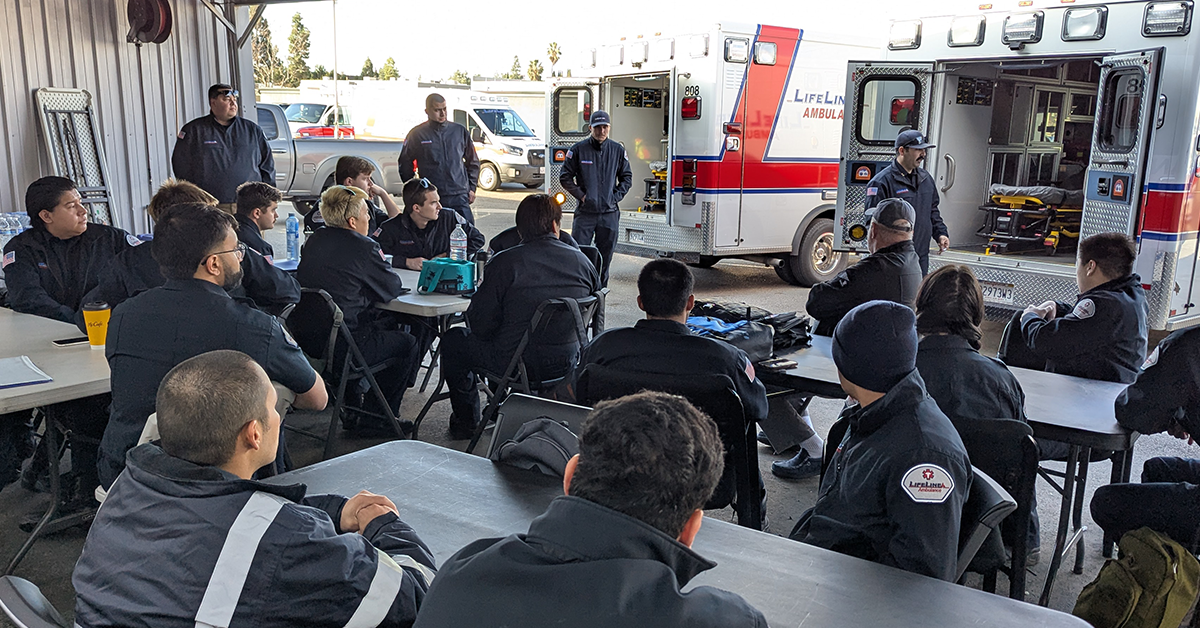Every second counts in a medical emergency, especially during cardiac arrest. Studies show that performing cardiopulmonary resuscitation (CPR) within the first few minutes of cardiac arrest can double or triple a person’s chance of survival. However, the effectiveness of CPR largely depends on immediate intervention, often before emergency medical responders arrive.
At LifeLine EMS, we believe that empowering the community with CPR training is one of the most impactful ways to save lives. By offering accessible CPR certification programs, workshops, and partnerships across Los Angeles and Southern California, we are creating a safer and more prepared community.
Why Community CPR Training is Critical
1. Cardiac Arrest Can Happen Anytime, Anywhere
Sudden cardiac arrest is one of the leading causes of death in the United States, with over 350,000 cases occurring outside hospitals each year. Victims can collapse at home, work, or public places. Without immediate CPR, brain damage or death can occur within minutes.
2. Survival Rates Depend on Bystander Intervention
Bystanders play a crucial role in saving lives. Statistics show that:
- Only 40% of cardiac arrest victims receive CPR from a bystander.
- Survival rates drop by 7-10% for every minute without CPR.
- Prompt CPR can increase survival rates by up to 300%.
3. Closing the Knowledge Gap
Many people are willing to help in emergencies but hesitate due to a lack of knowledge or confidence. Community CPR training eliminates these barriers, equipping individuals with the skills and confidence to act quickly.
LifeLine EMS’s Community CPR Training Initiatives
LifeLine EMS is at the forefront of CPR training programs in Los Angeles and Southern California. Our goal is to make CPR education accessible, practical, and impactful for individuals, businesses, schools, and organizations. Here’s how we do it:
1. Free and Low-Cost CPR Classes
We offer free and affordable CPR certification courses to ensure that cost isn’t a barrier to learning life-saving skills. Courses cover:
- Hands-Only CPR Techniques.
- Automated External Defibrillator (AED) Operation.
- Infant and Child CPR Training.
- First Aid Basics.
2. Workplace and School Programs
We collaborate with businesses, schools, and public institutions to integrate CPR training into their safety protocols. Programs include:
- On-Site Training Sessions.
- Customized Emergency Preparedness Plans.
- Staff and Student Certification Programs.
3. Community Events and Demonstrations
LifeLine EMS regularly hosts and participates in community events, including:
- Health and Safety Fairs.
- Neighborhood Block Parties.
- Public Demonstrations at Parks and Civic Centers.
These events provide hands-on training opportunities for the general public.
4. Targeting High-Risk Areas
Certain neighborhoods and demographics are more vulnerable to cardiac emergencies due to limited access to healthcare. LifeLine EMS prioritizes outreach in these areas, ensuring equitable access to CPR training.
What You Learn in LifeLine EMS CPR Training
Our training programs are designed to be straightforward, engaging, and effective. Participants learn:
1. Recognizing Emergencies
- How to identify signs of cardiac arrest, choking, or respiratory distress.
- When to activate emergency response systems.
2. Performing Hands-Only CPR
- Proper techniques for chest compressions.
- Maintaining rhythm and depth for effective resuscitation.
3. Using an AED
- Step-by-step instructions for operating automated external defibrillators.
- Confidence to use AEDs available in public spaces.
4. Infant and Child CPR
- Adjusting techniques for younger patients.
- Handling choking incidents in children.
The Impact of CPR Training in Los Angeles and Southern California
Los Angeles and Southern California are densely populated areas, where emergencies can occur in schools, workplaces, shopping malls, and public spaces. By training more people in CPR, LifeLine EMS helps:
1. Improve Emergency Response Times
When bystanders are trained, they can act immediately, providing critical care until EMS teams arrive.
2. Increase Survival Rates
Communities with higher CPR training rates report higher survival outcomes for out-of-hospital cardiac arrests.
3. Strengthen Community Resilience
Preparedness fosters a sense of safety and readiness among residents, making neighborhoods more resilient during emergencies.
How to Get Involved with LifeLine EMS CPR Training
1. Sign Up for a Class
Visit our website to browse upcoming CPR training sessions in Los Angeles and Southern California. We offer flexible schedules and group discounts.
2. Host a Training at Your Location
Contact LifeLine EMS to arrange on-site CPR training for your organization, workplace, or school.
3. Spread the Word
Encourage friends, family, and coworkers to join our CPR programs. The more people who know CPR, the safer our communities become.
Keep Reading
Want more? Here are some other blog posts you might be interested in.
In the high-stakes world of emergency medical services, clear and effective communication can mean the difference between life and death. EMS professionals...
Emergency Medical Services is an ever-evolving field that requires constant learning and adaptation. With medical advancements, technological innovations, and increasing public health...
Emergency Medical Services s a high-stress, physically demanding profession that requires dedication, quick decision-making, and resilience. While the rewards of saving lives...






